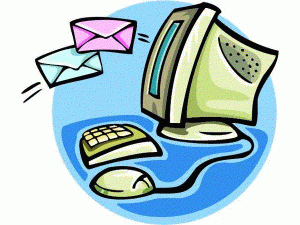I’m going to be starting a total cleanup of my site soon and part of this process included the re-evaluation of my social networking skills–or lack thereof. Generally, I use Facebook and Twitter to publish some of my blog posts from two different blog sites as well as links to other things on the Internet I like. So far, it’s worked pretty well. People are responding well to the Facebook links, but less from the Twitter links.
I think that’s simply because I don’t use Twitter all that much and it’s really more of an automated “side-feature” of my site–sort of like the overlooked black sheep in my collection of tools. The reason for this was because Twitter has become a polluted haven of spammers and junkie advertisers. It got to the point that my phone was going off every couple of minutes with push notifications about some random person I was following and how they just found the Holy Grail of ebooks to sell me.
Twitter as a promotional tool
Naturally when people are given a device that allows others to see what they do, they will take advantage and begin using it to plaster stupid information all over the place–many, many times per day! This is precisely what happened to me.
I’m all for using new and unique tools for self-promotion, but where do you draw the line? It’s almost like every spammer and blogger out there has a Twitter account and are using it to pollute the Internet with more useless information. I can always tell the spammers apart because they are always offering the same products for sale and they will post 100 messages a day to do it.
Twitter as a friend follower
What a novel idea! Use Twitter for what it was designed for!! The idea of having a tool that allows your close friends to send out an update about what they are currently doing or where they are was a unique concept only a year ago, but now even the social networks like MySpace and Facebook have adopted these features right into your profile page.
So where before, you had to actually call your friend to find out what they were up to, now all you have to do is log into your favorite site. It’s actually starting to get a little creepy!
But for those of us who aren’t spending this time telling everyone that we just got to the store and now we’re shopping and now we’re leaving and now we’re going home and now we’re watching tv……we’re using Twitter as a way to get our information out to the world–or at least to those few people that are actually following us.
What makes us different is that we feel that we’re offering a bit more value to the community. When Twitter offered the ability to search tweets, everything changed. Now you can post your tweet out in the world hoping that someone is looking for keywords that you used.
This process gives people who like what you have to say the choice of hearing more of what you have to say simply by following you.
When too much is too much
The point of this post was to tell you this story. In an effort to recruit new followers, I was duped into the idea that if you follow somebody else, they are more likely to follow you. Well, it worked, but then I ended up with over 300 spammers that I was following–minus a few legitimate users.
I’m moving right along until one day, Twitter stops me from following any more people. They actually sent me an emailing explaining how Twitter works and what it was intended for and although I can’t recite the entire email, I remember something like, it’s near impossible to follow the streams from over a hundred or so people.
It got me thinking and they were right. I logged into my Twitter account and realized there was no way I could possible read that many tweets! Shortly after, I noticed that I wasn’t even using Twitter anymore and all those people were tweeting to a brick wall.
I decided to change all that! I went back into my account and unfollowed everyone I didn’t know and I re-enabled push notifications so I can get the updates I needed from the people I wanted to hear from. Now, I won’t follow anyone just because they follow me unless I’m interested in what they have to say.
It’s just my little way of fighting the spammers. As a promise to anyone who follows me, you will not get spammed. At best, you will get some insight to my drab little life and important updates to my sites. At worst, you’ll get a daily blog post link.
After all that, if you actually want to follow me, please do so!
 interested users from all over the Internet–usually thousands of varying websites with numerous topics. They collect all of these emails and separate them into applicable categories and lists and then sell them to other websites to use in their marketing plans.
interested users from all over the Internet–usually thousands of varying websites with numerous topics. They collect all of these emails and separate them into applicable categories and lists and then sell them to other websites to use in their marketing plans. want to know about every bounced email your system gets because this gives you an opportunity to rectify the situation. In most cases, there’s nothing much you can do. If someone changed their email address and didn’t provide you with the new one, all you can do is prune your list accordingly.
want to know about every bounced email your system gets because this gives you an opportunity to rectify the situation. In most cases, there’s nothing much you can do. If someone changed their email address and didn’t provide you with the new one, all you can do is prune your list accordingly.